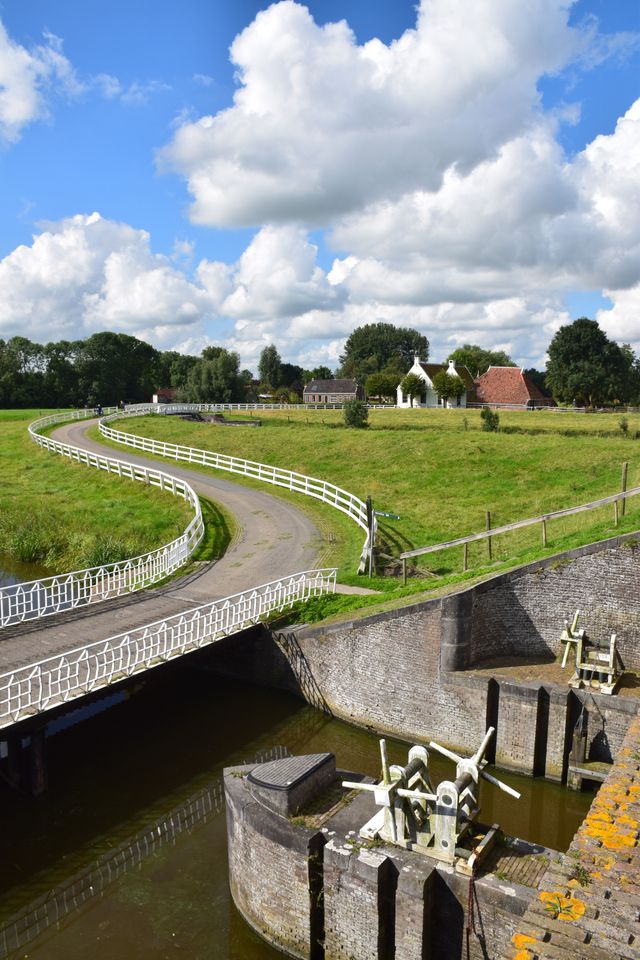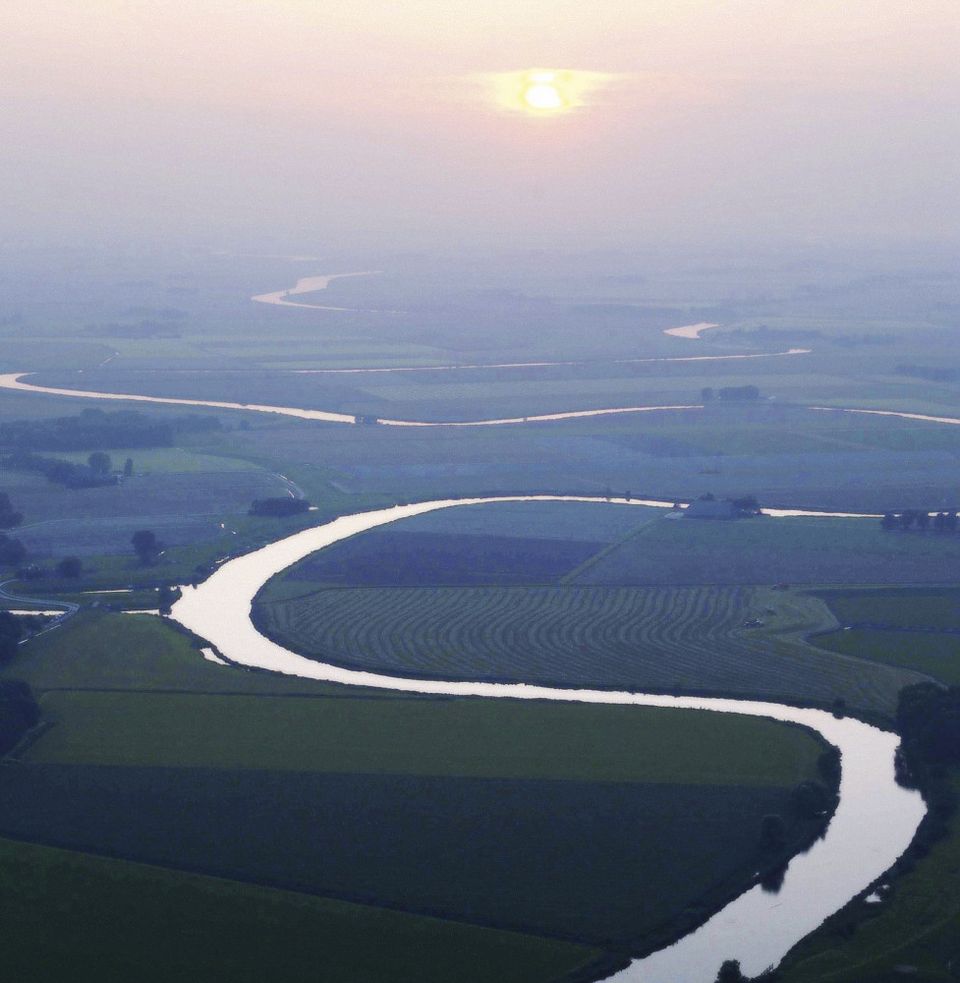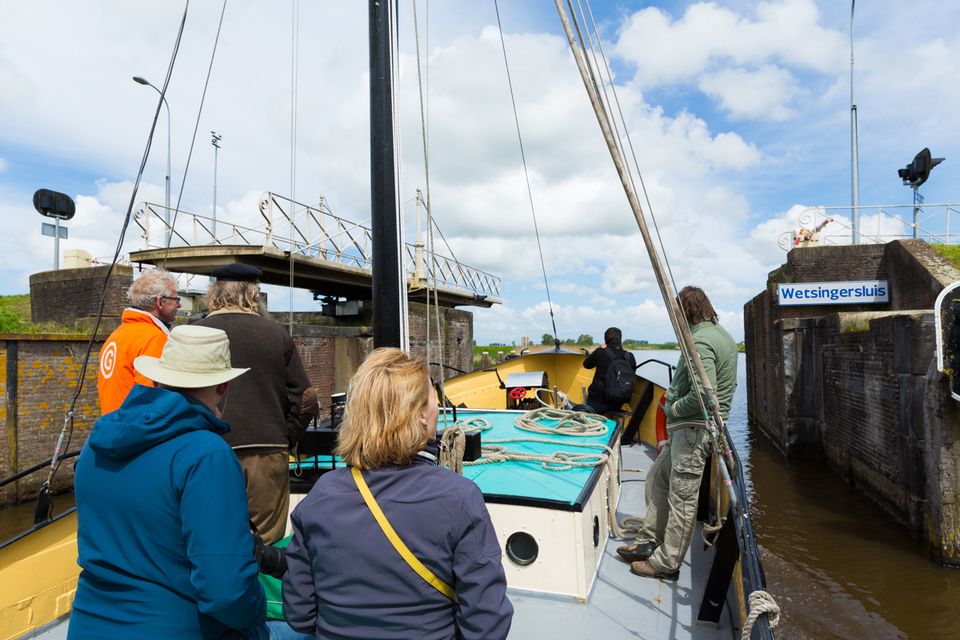Meander through time
The Reitdiepgebied is one of the oldest cultivated landscapes behind the Wadden Sea dike. Once the Hunze (now the Reitdiep) meandered through the landscape between city and mudflats.
This provided the city of Groningen with an open connection to the Wadden Sea. Until 1876 the Noorderhaven was subjected to the tides. In addition to the low and high tides the salt water also had a large impact on the landscape. From the 13th century onward the Hunze was gradually canalised. This created the Reitdiep which was permanently closed off from the sea near Zoutkamp in 1877.
Old waterworks
In certain places the old trajectory of the Hunze can still be clearly seen in the landscape, for example, near the Oude Diepje at Winsum where five of the river’s bends that kept silting up were cut off in 1629. The old meanders were embanked so they would silt up.
The Oude Diepje is the drainage canal that was constructed to drain the land along the old river. Two pumps, the Noorderpomp and the Zuiderpomp, pumped the water from the canal into the Reitdiep. In several spots along the Reitdiep you can find signs with information about this and other waterworks. A walk along the old Hunze is a walk back in time.
Water management now
The maren - ditches that can be centuries old - still meander through the Groninger landscape. And the Reitdiep is still the main drainage of the north and the west of the province of Groningen. Drainage mill De Waterwolf is located near the hamlet Lammerburen. Lammerburen is most often referred to as Electra. This is where the festival of the same name is held biennially.
-
Water Heritage
Water Heritage

-
Wadden Coast Groningen
Wadden Coast Groningen




